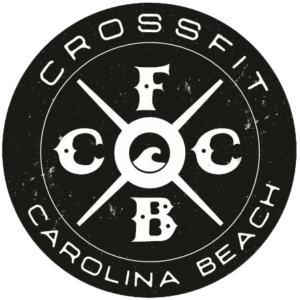Goal Setting 101
Progress in any realm is easy if you have a clear goal, a plan to get there, and a method to monitor the process.
The process of goal setting may be the most important and most easily overlooked aspect of success. There are a ton of resources on the purpose of clear and actionable goals, but let’s take a second and make the process of goal setting also clear and actionable.
When I see people with poorly defined goals, it’s not because the goals suck, or even their adherence is terrible, but most often because they didn’t have a clear vision for what the process of goal setting SHOULD look like.
THE STEPS
- What are your goals?
- Where are you at now in relation to your goals?
- What changes are you willing to make that move you from where you are now to your goals?
- Apply those changes and see if they are helping you reach your goal.
- Assess results.
- Repeat the cycle from step 1.
For the sake of this post, we will use nutrition goals as the focal point.
Step 1: What are your goals?
I like to classify nutrition goals into three categories:
- Aesthetics
- Performance
- Longevity
You could take those a step further with
- Aesthetics
- Weightloss
- Weight gain
- Weight maintenance with body composition shift(i.e. Less fat/more muscle)
- Performance
- Strength gains
- Endurance gains
- Cognitive function
- Longevity
- Avoid cognitive decline
- Avoid cancer
- Avoid heart disease
- Avoid diabetes
- The list goes on, and there is a lot of carryover in disease prevention diets.
- If any of these disease preventions sound particularly interesting to you, I highly recommend some sort of genetic testing, like 23 and Me Health Ancestry report, and paired with Dr. Rhonda Patrick’s Genetics Report. This alone could add 10 years to your life and also drastically increase health span(health span is how self-sufficient you are; you can live to 130 but be too handicapped to enjoy it for 50 years. Increase your health span should be a focus, too )
Step 2: Where are you now in relation to your goals?
Are you 50#’s overweight and afraid to get started? For most folks in this situation, they need to take action.
I often hear ”Oh I need to get in shape before I join the group classes.” or “I’d love to lose a few pounds before I make any changes” These situations are often linked back to inaction. Getting “in shape” before joining the gym is like cleaning the house before the maid shows up; the pros are ready to help so don’t make a half effort to save yourself some embarrassment.
You’ve got to take action to see a change.
Have you made huge progress and are looking for the next step?
Remember the basics. Go back and identify or even redefine your goals. If you follow the steps you will likely have to redefine your goals often, because the progress will be undeniable!
Step 3: What changes are you willing to make that will move you from where are now towards your goals?
And let’s start small. Super small steps are the key to making long-term change. One thing at a time is all that most folks should change.
Can’t quite sugar?
What’s one thing you consume that has sugar in it that you can swap for a non-sugary substitute? Do that.
Need more exercise but are afraid of the commitment, the conversations, or the judgments you might face by signing up for a gym?
Go outside and walk for 10 minutes. Right now. Stop reading. This article will still be here when you get back. Go for a walk! It’s not too cold. It’s not too hot. It’s only ten minutes. You’ve got to start somewhere.
Can’t walk? Pick something up and set it down a few dozen times. Make sure it is light enough to keep you from overstraining. Seriously, even setting up a book from the ground to a shelf 20 times can get the heart rate going. We’ve got to get the muscles moving and the body asking for some different hormones.
Just, start, moving.
Step 4: Apply those changes and see if they are helping to get closer to your goal.
It takes time.
“I substituted stevia for sugar in my morning coffee for a whole week and saw zero changes.”
“I walked for 10 minutes a day, 4 days in a row, and saw zero changes.”
I would be willing to bet that neither of these is a true statement, but it certainly takes longer than a week to notice a real change.
3 weeks.
3 Weeks is how long I recommend testing a change before coming to a conclusion, and even that is premature in a lot of situations.
In my days of owning a gym, we provided solutions for weight loss and health improvement that are guaranteed to be successful if you commit and show up. Seriously, all you had to do was walk in the door, and 3 months later, there was an undeniable change. Every client. Every time. When people feel off at 4-6weeks, they just hadn’t had enough exposures. And this was with some pretty hard workouts that were using up a lot of calories! Making a change takes a lot of effort, but it is worth it…EVERY. SINGLE. TIME.
Step 5: Assess results
Review results every 2 weeks to see how things are progressing, but keep plans quarterly.
Let’s break that down a step further.
Make a 3-month plan to walk 30 minutes total a day, 4 days a week. If this is for weight loss, step on the scale at the beginning, then again 2 weeks later. Progress? Great! Keep doing what you are doing!
No change? Try 2 more weeks, then if still no change, maybe try walking faster, or adding in another day.
Keep the plan for the quarter, and use the 2-week check-ins to see if you are ready to make a small change to the plan(like walking faster).
Workout programs can get really detailed, so we will just leave this as an example for now.
Step 6: Repeat the cycle from step 1
- What are your goals?
- Where are you at now in relation to your goals?
- What changes are you willing to make that move you from where you are now to your goals?
- Apply those changes and see if they are helping you reach your goal
- Assess results
- Repeat the cycle from step 1
Progress is easy if you have a clear goal, a plan to get there, and method to monitor the process to make alterations if need be.
You got this!
Jordan Vance, M.B.A., PNL1,
Jordan helps people reach their goals and break through massive barriers by making simple and easy to follow programs. He loves a great meal, a great coffee, and a great pint of something local. When he isn’t writing or walking his dog with his wife, he is either helping someone crush their goal, or creating a plan to help more goals be crushed.

